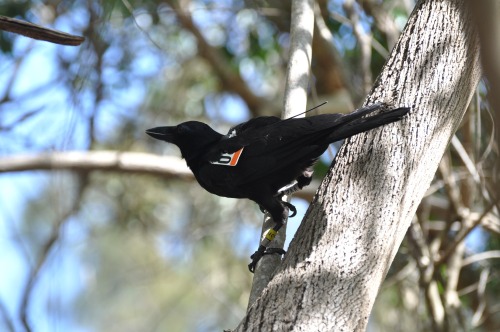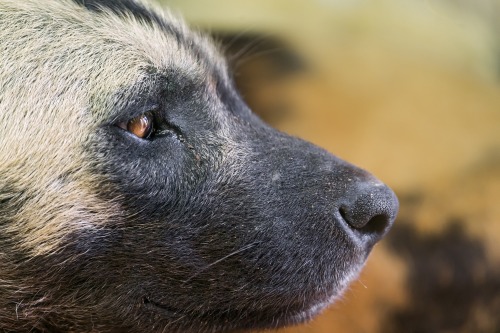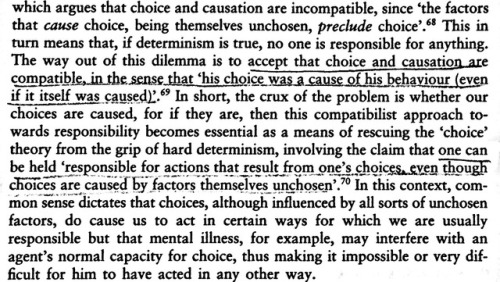#behaviour
How crows connect
The New Caledonian crow is well-known for its ability to make and use tools to poke nutritious insects out of their hiding places.
An international team led by the University of St Andrews has studied the social networks of crows to understand how tool-use might spread between birds and across communities.
The team looked at the social interactions of wild New Caledonian crows in their tropical habitat. Each crow was fitted with a high-tech, miniature spy tag which provided a record of which crows met at any given time.
They found that providing the crows with food had a similar effect to putting out a plate of freshly baked cookies – individual crows hang around the supply which can accelerate the spread of interesting information.
Scientists still don’t know how much of their tool-use behaviour New Caledonian crows learn from each other, but the study shows that opportunities for information exchange are plenty, especially when important resources encourage birds to forage in the same place.
Images: James St Clair, James St Clair, Jolyon Troscianko
Post link
Revealed: hunting strategy of the endangered African wild dog
A new study led by researchers at the Royal Veterinary College has revealed that African wild dogs may be more robust than previously thought.
The researchers used custom-built GPS collars to collect position and speed data to reconstruct the hunt behaviour of an entire pack of African wild dogs in northern Botswana.
The researchers found that given the the opportunity, African wild dogs hunt with frequent short chases. In addition, the pack showed no evidence of coopertive hunting, apart from travelling together and sharing the kills made by an individual dog.
Understanding the hunting strategies of a species helps conservationists to identify which areas should be protected, or where new populations can be reintroduced most successfully.
Read more
Image credit: Neil Jordan, Megan Classe, Tambako The Jaguar
Post link
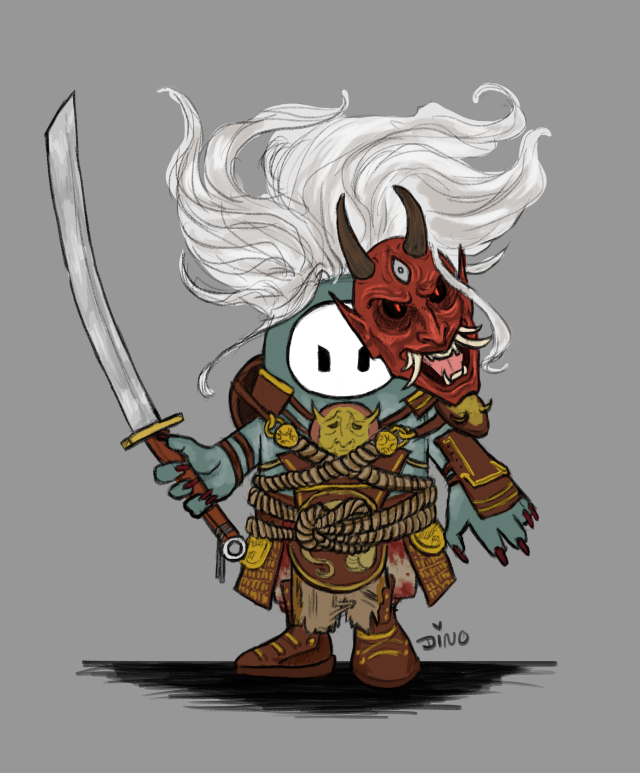
Digging through pieces I never really posted, this was an idea I had in stream as if dead by daylight were to make a collab with fall guys, chose Oni because I wanted to draw a different character than the ones I usually do (kinda feel like it now honestly)
Also, wanted to remind if anybody is interested my commissions are open, and in about two weeks or less I’ll be back to background commissions, you can find my prices in here
“Causation is not an excuse, however, for all behaviour is caused. If causation were an excuse, no one would ever be held responsible for any behaviour… Causation is not the issue; nonculpable lack of rationality and compulsion is.”
— S J Morse, “Excusing the Crazy: The Insanity Defense Reconsidered” (1985)
In celebration of #DarwinDay we went into our archives and dug out these pages from ‘The Expression of the Emotions in Man and Animals’.

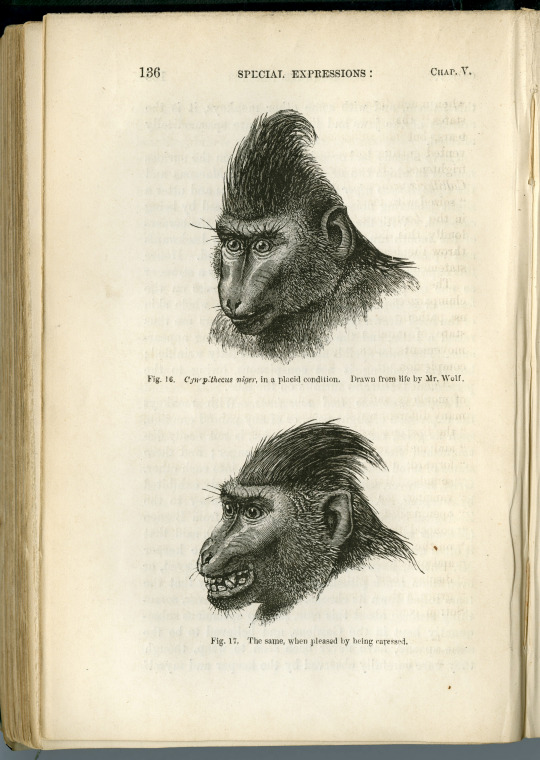
This was Charles Darwin’s third major work on evolutionary theory and laid out his early ideas about behavioural genetics.

It explored emotions in animals and humans and attempted to work out their evolutionary origins, like why we raise our eyebrows when we are surprised.

This page below is often referred to as ‘Screaming infants’, for obvious reasons.
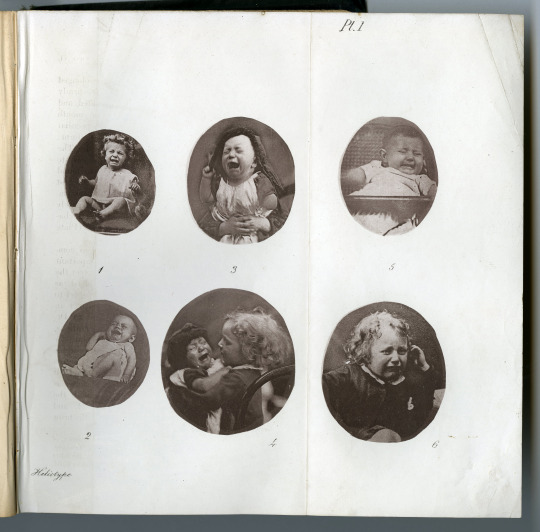
The bottom photo on the page below is from a study by Darwin’s contemporary, neurologist Guillaume Duchenne (who’s work gave rise to the term ‘Duchenne smile’).

The book was quite revolutionary in using biological illustrations and paved the way for future works.
Though by the end of working on the book, Darwin wrote that he was 'sick of the subject and myself, and the world’.

The world ain’t sick of you, Darwin - Happy Birthday!
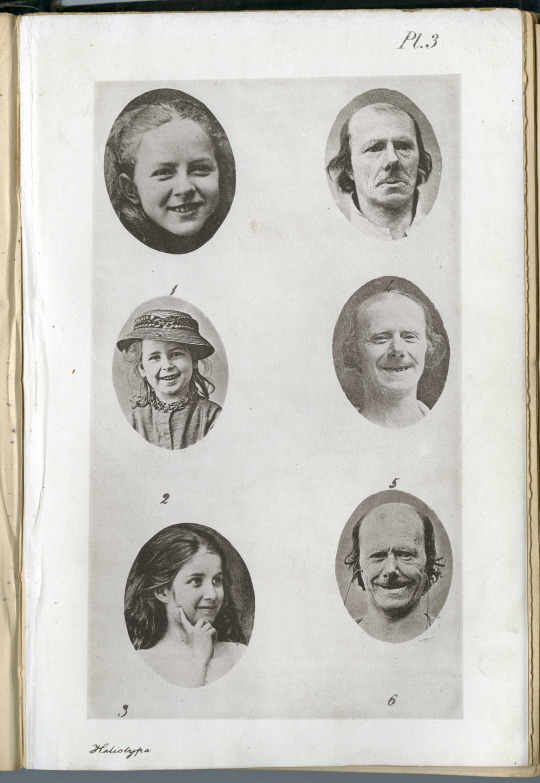
Pictures from the Royal Institution Archival Collection. The book was published on Albemarle Street in London, where the Royal Institution also finds its home.
the dogs reaction tells me this is a game they have played many many times and he can’t wait to provoke this dude into chasing him through the house
The split-second play bow the doggo does before he takes off really makes this whole video XD
I’m not an expert on dog body language (still have a lot to learn) but there’s a few things here that make me question if this is actually a fun interaction between two parties or another case of misunderstanding. I’m convinced of the latter.
What really strikes me is how the dog’s head turns away and how tense the face is around the eyes (notice the squinting?). The dog also blinks quite often and clearly shows the whites of the eyes while the head is turned. The tail, though wagging, is stiff. These are stress-signals. Panting would also be one of them but I still have a hard time distinguishing between a relaxed pant and a stressed one (there’s a lot of context involved there). But, considering the tongue is so set in the mouth and the corners of the mouth are pulled all the way back, I’m leaning toward this being stress-related as well (makes the most sense in the context of the rest of the body language here).
I do not see a play bow here. A play bow is characterized by a lowered front part of the body while the rear is raised. I know dogs don’t always bow all the way but this looks more like an attemp to stand up than a play bow. That said, a play bow isn’t always an indicative of good-natured play. I have to do more research into this so to provide some anecdotal evidence: I’ve seen dogs go into very clear play bows right before snapping at the other dog behind the fence. I’ve also seen my own dog go into play bows in moments she was tense and unsure what to do or what to make of the people she met. Wagging, similarily, isn’t always a sign of friendliness/happiness; it can mean a whole number of things depending on stiffness, motion and context.
Overall, I would say this dog is not enjoying this interaction and finds it quite stressful.
your personality type determined by nurture or nature explained forever so you won’t need any other.
sometimes it’s determined by nurture mostly and sometimes totally nature.
if you born as a very introverted baby, nurture have to be really intensely in the other direction to turn you into an extravert and that’s still in theory. you will probably stay an introvert.
but not all babies born very “introverted” or very “extraverted”. in fact, most babies will born with normal values so for these babies nurture going to play a very important role.
okay but how and why babies born as an introvert? or as a feeler? hormones and neurotransmitters can explain a ton.
for example a high dopamine baby will be more energetic, then they will explore more and cry harder and be restless. naturally, for this baby to become an extravert will be much more likely.
then, if a baby has more testosterone than usual this will further make them more direct, brave and masculine-like what else to expect?
but if a baby has low testo as a boy or high estrogen as a girl, then chances of these to become feelers gonna increase too.
see, i just talk about two hormones and so many stuff explained already. there are many other hormones:
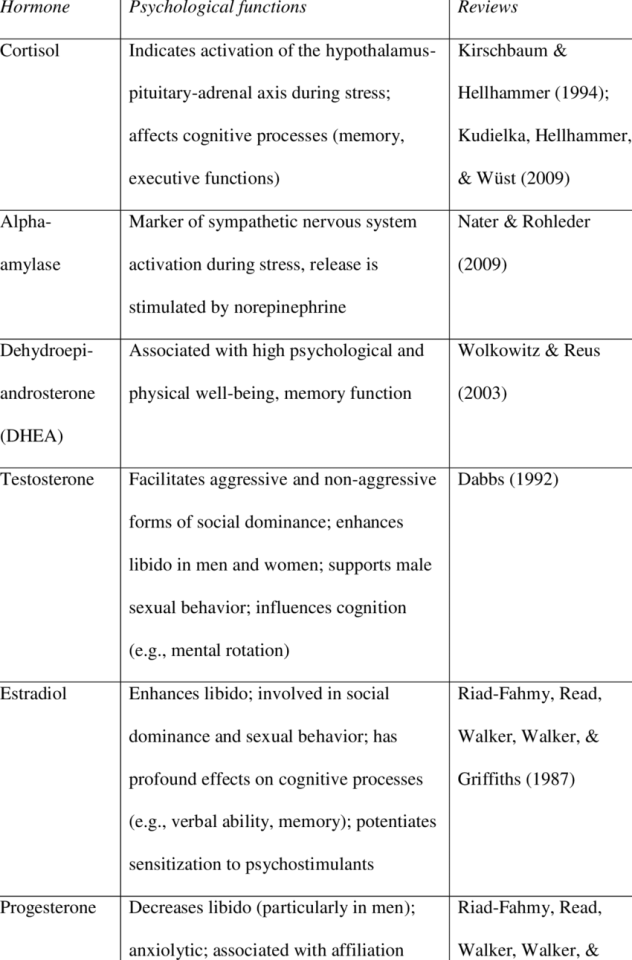
and neurotransmitters:

- low noradrenaline maybe contributes to xxxp personality type development and high noreadrenaline to xxxj?
- high serotonin / gaba maybe increase the chances of high si and makes you chill?
- read this about acetylcholine / dopamine. which is all about introversion vs extraversion.
- and the things endorphins does can be read as a very stereotypical se definition.
so yeah, once again: the more normalized your values on these, the more nurture will affect you, the more open are you as a system to change. the more anomalies there are the more nature will determine things.
Red Horned Crab Spider (Gasterocantha sp.) insitu at Andasibe-Mantadia National Park, Madagascar.
© 2015 - Joshua Ralph - All Rights Reserved.
Post link
Kik smiledom
İf u are open minded lady and never shy from anything kik me.i am here for you.
Dady loves you
Post link
When you are adding days to your cuckolds chastity for bad behaviour, tell him the only way to reduce that time is to find you a new guy to fuck or to let you fuck one of his friends.
…The approach of behaviorism is in some respects different from that of panphysicalism, but it resembles the latter in its hopeless attempt to deal with human action without reference to consciousness and aiming at ends. It bases its reasoning on the slogan “adjustment.” Like any other being, man adjusts himself to the conditions of his environment. But behaviorism fails to explain why different people adjust themselves to the same conditions in different ways. Why do some people flee violent aggression while others resist it? Why did the peoples of Western Europe adjust themselves to the scarcity of all things on which human well-being depends in a way entirely different from that of the Orientals?
Behaviorism proposes to study human behavior according to the methods developed by animal and infant psychology. It seeks to investigate reflexes and instincts, automatisms and unconscious reactions. But it has told us nothing about the reflexes that have built cathedrals, railroads, and fortresses, the instincts that have produced philosophies, poems, and legal systems, the automatisms that have resulted in the growth and decline of empires, the unconscious reactions that are splitting atoms.Behaviorism wants to observe human behavior from without and to deal with it merely as reaction to a definite situation. It punctiliously avoids any reference to meaning and purpose. However, a situation cannot be described without analyzing the meaning which the man concerned finds in it. If one avoids dealing with this meaning, one neglects the essential factor that decisively determines the mode of reaction. This reaction is not automatic but depends entirely upon the interpretation and value judgments of the individual, who aims to bring about, if feasible, a situation which he prefers to the state of affairs that would prevail if he were not to interfere. Consider a behaviorist describing the situation which an offer to sell brings about without reference to the meaning each party attaches to it!
In fact, behaviorism would outlaw the study of human action and substitute physiology for it. The behaviorists never succeeded in making clear the difference between physiology and behaviorism. Watson declared that physiology is “particularly interested in the functioning of parts of the animal… Behaviorism, on the other hand, while it is intensely interested in all of the functioning of these parts, is intrinsically interested in what the whole animal will do.”2 However, such physiological phenomena as the resistance of the body to infection or the growth and aging of an individual can certainly not be called behavior of parts. On the other hand, if one wants to call such a gesture as the movement of an arm (either to strike or to caress) behavior of the whole human animal, the idea can only be that such a gesture cannot be imputed to any separate part of the being.
But what else can this something to which it must be imputed be if not the meaning and the intention of the actor or that unnamed thing from which meaning and intention originate? Behaviorism asserts that it wants to predict human behavior. But it is impossible to predict the reaction of a man accosted by another with the words “you rat” without referring to the meaning that the man spoken to attaches to the epithet.
Both varieties of positivism decline to recognize the fact that men aim purposefully at definite ends. As they see it, all events must be interpreted in the relationship of stimulus and response, and there is no room left for a search for final causes. Against this rigid dogmatism it is necessary to stress the point that the rejection of finalism in dealing with events outside the sphere of human action is enjoined upon science only by the insufficiency of human reason. The natural sciences must refrain from dealing with final causes because they are unable to discover any final causes, not because they can prove that no final causes are operative. The cognizance of the interconnectedness of all phenomena and of the regularity in their concatenation and sequence, and the fact that causality research works and has enlarged human knowledge, do not peremptorily preclude the assumption that final causes are operative in the universe.
The reason for the natural sciences’ neglect of final causes and their exclusive preoccupation with causality research is that this method works. The contrivances designed according to the scientific theories run the way the theories predicted and thus provide a pragmatic verification for their correctness. On the other hand the magic devices did not come up to expectations and do not bear witness to the magic world view.
It is obvious that it is also impossible to demonstrate satisfactorily by ratiocination that the alter ego is a being that aims purposively at ends. But the same pragmatic proof that can be advanced in favor of the exclusive use of causal research in the field of nature can be advanced in favor of the exclusive use of teleological methods in the field of human action. It works, while the idea of dealing with men as if they were stones or mice does not work. It works not only in the search for knowledge and theories but no less in daily practice.
The positivist arrives at his point of view surreptitiously. He denies to his fellow men the faculty of choosing ends and the means to attain these ends, but at the same time he claims for himself the ability to choose consciously between various methods of scientific procedure. He shifts his ground as soon as it comes to problems of engineering, whether technological or “social.” He designs plans and policies which cannot be interpreted as merely being automatic reactions to stimuli. He wants to deprive all his fellows of the right to act in order to reserve this privilege for himself alone. He is a virtual dictator.
As the behaviorist tells us, man can be thought of as “an assembled organic machine ready to run.”3 He disregards the fact that while machines run the way the engineer and the operator make them run, men run spontaneously here and there. “At birth human infants, regardless of their heredity, are as equal as Fords.”4 Starting from this manifest falsehood, the behaviorist proposes to operate the “human Ford” the way the operator drives his car. He acts as if he owned humanity and were called upon to control and to shape it according to his own designs. For he himself is above the law, the godsent ruler of mankind.5
As long as positivism does not explain philosophies and theories, and the plans and policies derived from them, in terms of its stimulus-response scheme, it defeats itself.
— Ludwig von Mises, Theory & History, Chapter 11


